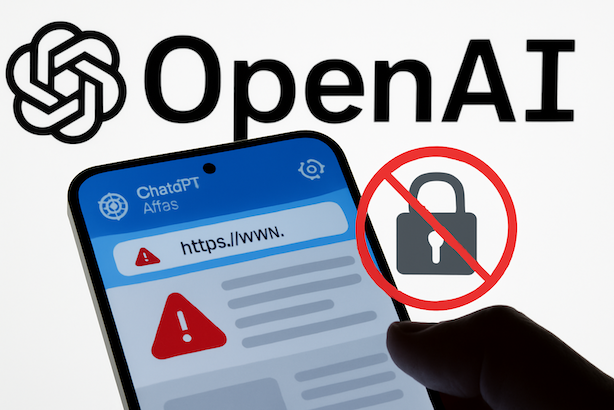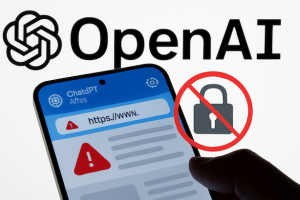OpenAI’s new browser, Atlas, feels like a glimpse of the future. It’s fast, elegant, and powered by an AI that can explain, summarise, and search across everything you see online. But beneath the excitement lies a quiet omission that repeats one of the web’s oldest mistakes.
Atlas launched without support for third-party extensions. No password managers, no ad blockers, no link checkers, no independent safety tools, no parental controls. It’s a small design choice with huge implications because it leaves people without the simple defences that separate a safe experience from a risky one.
The problem we thought we solved
For decades, browsers have tried to help people decide what to trust online. The padlock icon was supposed to make that simple, a universal symbol of safety. It worked for a while, until it didn’t.
The padlock doesn’t verify who’s behind a website. It only confirms that the connection is encrypted. A phishing site with a padlock is still a phishing site. But people were conditioned to trust it anyway.
When browsers removed Extended Validation certificates in 2019, they also removed visible identity labels. Encryption remained, but the identity layer disappeared. What’s left is a web that’s technically secure but behaviourally unsafe, a system that protects data transmission but not human judgement.
AI can’t fix a flawed foundation
Atlas is part of a new generation of browsers that use AI to make the web easier to navigate. But ease and safety aren’t the same thing. AI can summarise what’s on a page, but it can’t yet confirm who made it or whether that page belongs to the organisation it claims to represent.
People don’t fall for scams because they’re careless. They fall because the web trains them to make trust decisions based on misleading signals, design, padlocks, or brand familiarity. AI might make those decisions faster, but unless browsers rethink how trust is signalled, it will only automate the same human mistakes.
This becomes even more risky as OpenAI begins partnering with retailers, payment providers, and commerce platforms inside Atlas. If the browser recommends where to buy or what to download, every interaction becomes a potential vector for fraud, identity theft, account takeovers, and other undesirable outcomes like spyware and corporate data breaches. The more convenient these AI-driven recommendations become, the greater the damage when a single fake link is assumed safe.
The next leap isn’t smarter content, it’s proven identity
The future of browsing isn’t just about intelligent search or seamless chat integration. It’s about restoring context and identity to a web that lost both.
Imagine if every browser gave you a clear answer before you clicked, not a guess, not a warning after the fact, but a verified signal of legitimacy. That’s what the web was supposed to be: transparent, accountable, and safe by design.
Until then, no matter how advanced browsers become, they’ll still carry the same flaw that’s haunted the internet for 30 years. We built a system that protects data, not people.





